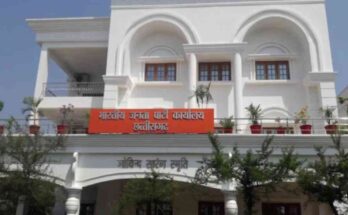Wildlife habitat upgradation work: Intensive lantana and eupatorium eradication work done in 5920 hectare area under CAMPA item
Developed good facilities for habitat and pasture of wildlife
Located at a distance of 100 km from the capital, there are abundance of wildlife in the sanctuary.
Raipur, 03 October 2022


Barnawapara, the most excellent and attractive sanctuary of Chhattisgarh, has been rejuvenated in a new form. This rejuvenation has been done with the amount approved in the annual action plan 2021-22 of CAMPA (Chhattisgarh Compensatory Afforestation Fund Management and Planning Authority) under wildlife habitat upgradation work. Under this, intensive lantana eradication and eupatorium eradication work has been done in 5 thousand 920 hectare area. Out of which the work of eradication of lantana in total 950 hectare area in 19 rooms of Barnwapara sanctuary and eupatorium eradication work in total area of 4 thousand 970 hectares in 32 cells.


At a distance of about 100 km from the capital Raipur, the grass species has started growing rapidly due to the moisture in the soil in Barnawapara Sanctuary located under Balodabazar Forest Division. Along with this, the wildlife in the sanctuary has now got a good facility for grazing the grass. Due to which they have started roaming freely after the eradication work of Lantana and Eupatorium. Due to this, the tourists have got easy sight of the wildlife and the wildlife has also started appearing healthy and healthy. A clear difference in grass reproduction can be seen after the wildlife habitat eradication work in the sanctuary.
The total area of Barnawapara Sanctuary is 244.86 sq km, in which mainly mixed forest, sal forest and teak plantation of the east. In Barnawapara, mainly Karra, Bhirra, Senha are found in mixed forests. Teak is the naturally grown teak in the plantation area and the Sal forest area is in less area. In addition to the above beehive species, herbaceous species like Eupatorium, Lentana, Charotha etc. are the main weeds, due to which the herbivore wildlife found in the Barnavapara Sanctuary area does not get grass etc. it happens.
Keeping this in view, the work of eradication of intensive lantana and eupatorium has been done under wildlife habitat upgradation work in the sanctuary, so that now in Barnwapara Sanctuary, green edible grass can be available to the wildlife throughout the year as their food and fodder. It is worth mentioning that in Baranwapara Sanctuary, wildlife like leopard, gaur, bear, sambar, chital, nilgai, kotari, chausingha, wild boar, wild dog, striped hyena, fox, wolf and mouse deer are found in abundance and are also easily visible.
4152/love




